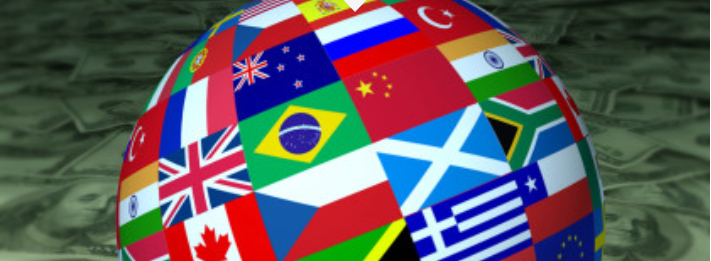ABN Amro konstaterer, at der har været en stærk fremgang i mange Emerging Markets i år efter coronakrisens start, men når fremgangen tager til i det nye år, vil der være mange bump på vejen, og der er stor forskel på, hvordan landene kommer gennem krisen. Flere asiatiske lande med Kina i sidsen klarer genopretning godt. ABN Amro venter fremgang i 2021 i USA på 3,2 pct., i eurozonen på 2,7 pct., men for Emerging Markets ventes en fremgang på 6 pct. – med 7 pct. i de asiatiske EM-lande og kun den halve vækstrate i Østeuropa og Latinamerika. Bortset fra Kina og Taiwan, kommer EM-landene dog først op på før-corona-niveauet i 2022.
EM Outlook – Path to recovery from covid-19 shock will remain bumpy in 2021
The road to post pandemic normalisation remains bumpy
For 2021, we now forecast US growth at 3.2% and eurozone growth at 2.7%. For EMs, we expect annual growth to accelerate to almost 6% next year, with emerging Asia in the lead (around 7%) followed by emerging Europe and Latin America (around 3.5%).
However, the pandemic will leave its mark: by end 2021 emerging markets will have lost over 6% of GDP compared with our pre-covid-19 base case. Many EMs (excluding countries like China or Taiwan) will not have returned to pre-corona GDP levels before 2022.
Global economic prospects have been shaped by the covid-19 pandemic, that sent the world economy into a deep recession in the first half of 2020.
The path to post pandemic normalisation and recovery has started, but will remain bumpy and full of pandemic-related uncertainties, with clear differences between countries/regions reflecting different policy approaches and variations in the strength of public health systems.
North East Asia (China, Taiwan, South Korea) has done well in getting the pandemic under control, while many EMs including India, Brazil and Russia are still struggling. Meanwhile, in relative terms Asia and Africa are reporting less fatalities than the Americas and Europe.
Timeline for vaccine roll-out in EMs will depend largely on availability and infrastructure
Recent developments on the vaccine front look positive and are more or less in line with our global base scenario, in which we assume emergency vaccines to be approved by end 2020 (also see our report on vaccine developments here).
Vaccination programmes have already started in several developed and emerging economies. In general, we expect vulnerable groups and key workers to be inoculated by mid 21-Q2. We expect approval of full market access of vaccines and the start of a broader roll-out in 21-Q3, bringing herd immunity closer. The specific timeline for vaccine roll-out in EMs depends largely on availability and existing infrastructure.
Countries that have secured deals with large pharmaceutical companies and have adequate cold storage infrastructure and vaccine logistics know-how could reach so-called ‘herd immunity’ prior to some advanced economies.
Several Chinese vaccine candidates already received emergency use authorisations. China has already vaccinated many specific groups at home and works together with foreign countries to develop and test. The UAE, for instance, already introduced one of the Chinese vaccines. Russia also developed a vaccine, but that will likely be used in Russia and neighbouring countries only (Hungary has been criticised by the EU for its plan to use the Russian vaccine).
Despite renewed headwinds from pandemic, EMs set for catch-up growth in 2021
The spread of covid-19 and the instalment of lockdowns has sent the global economy into a tailspin, particularly in Q2. We sharply downgraded our 2020 growth forecasts for advanced and emerging economies. We now expect the US economy to contract by around 4% in 2020 and the eurozone economy by around 7.5% (the IMF expects an aggregate contraction of almost 6% for all advanced economies).
We cut our EM average growth forecasts for 2020 from +4.1% pre-corona to -3.0% now. The sharpest cuts took place in Latin America (Peru, Mexico, Colombia) and South Asia (India, Philippines, Thailand). Only for a few Asian countries that were successful in containing the pandemic (China, Taiwan, Vietnam) we expect positive annual growth in 2020. Nevertheless, we expect negative annual growth in 2020 in all EM regions, with Latin America hit the most (-8.2%) followed by emerging Europe (-4.1%) and emerging Asia (-1.5%).
The global economy has started to recover at the end of Q2 as economies have reopened and worldwide authorities have reacted by massive monetary and fiscal stimulus. Manufacturing PMIs have bounced back and global trade has picked up again over the summer. Still, with second and third virus waves and renewed (partial) lockdowns in many places, our global base case assumes a bounce in activity in Q3 to be followed by renewed weakness in 20-Q4 and 21-Q1.
That said, in annual growth terms we expect the sharp 2020 dip to be followed by above trend growth in 2021, mainly reflecting base effects.
While the pandemic seems to have put growth differentials in favour of EMs, that is to a large extent due to China’s quick and sharp recovery. In fact, since the end of the commodity super cycle, the share in global GDP of EMs excluding China has fallen from just over 30% in 2013 to around 26.5% in 2020. In the same period, China’s share in global GDP has risen further, from 12.5% to 18%. In fact, the rise of China has been accelerated in the pandemic year 2020.
Recovery of portfolio flows to EMs boosted by positive vaccine news and US elections
In early 2020, the spread of covid-19 beyond China led to a sharp deterioration in market sentiment, that went hand in hand with a large outflow of portfolio flows from emerging markets. According to IIF data, (non-resident) portfolio flows out of EMs amounted to a record high of USD 90bn in March.
That amount of outflows was higher than the amounts seen during any single month at the times of the global financial crisis in 2008-09. However, portfolio outflows from EMs lasted for four months in a row in September-December 2008, while in the current pandemic crisis there was a much quicker rebound.
Portfolio (debt and equity) flows to EMs have been in positive territory from April onwards, despite a summer lull in August-September. The recovery of portfolio flows to EMs since March was initially relatively modest. However, the overall picture has improved recently on positive vaccine news and the reduction of uncertainty regarding the outcome of the US presidential elections.
The IIF estimates monthly portfolio flows to EMs at a record high in November (USD 76.5 bn). It should be noted that key EMs such as China, Brazil or Russia are not very dependent on portfolio inflows, as they have relatively strong external fundamentals (China, Russia) and/or depend to a large extent on less volatile forms of capital inflows (FDI in Brazil).
Meanwhile, the rebound of portfolio flows to EMs has gone hand in hand with a recovery of emerging market currencies and an easing in credit risk premia in the course of 2020, following the covid-19 shock in March.
Emerging Asia: China is leading the region out of the covid-19 abyss
Due to the covid-19 pandemic, annual growth in emerging Asia will be negative in 2020 (-1.5%), a rare phenomenon. That said, there is strong divergence with regard to the handling of the pandemic and the severity of economic pain:
– In North Asia (China, Taiwan, South Korea) and Vietnam, the authorities have gained control over the virus relatively quickly and the collapse in GDP in the first half of 2020 has been relatively limited. For China, Taiwan and Vietnam we expect positive annual growth for the full year 2020. For Taiwan, which has profited from a pandemic-related pickup in demand for electronic products, we now even expect slightly higher growth in 2020 than we did before the pandemic broke out. For South Korea we expect a limited contraction in 2020 (-1.0%).
– By contrast, in South Asia authorities have generally been less successful in getting the pandemic under control. Moreover, countries like Thailand and Malaysia are relatively dependent on tourism, while commodity exporters like Malaysia and Indonesia have felt the effects of previous corrections in commodity prices. We have seen double digit GDP contractions in Q2 for Malaysia, Philippines and Thailand. Meanwhile in India – faced with infrastructural bottlenecks – a stringent but messy lockdown led to a 24% yoy GDP contraction in Q2, the sharpest in the region.
On a brighter note, emerging Asia has shown a clear economic rebound from the covid-19 collapse, led by China. The regional manufacturing PMI has risen from a trough of 41.2 in April to a ten-year high of 54.5, albeit with a wide variety between countries. Regional GDP growth turned marginally positive again in Q3 (+0.2% yoy), compared with -5.3% in Q2.
That was largely thanks to China (back to almost 5% annual growth), with most other countries still showing negative annual growth in Q3. The rebound is based on the fact that pandemic restrictions have been eased in the course of 2020, while authorities have added significant monetary and fiscal support. What is more, for export oriented emerging Asia it has been important that the global economy has improved compared to Q2.
World trade has shown a rebound from the covid-19 collapse in April and May, with emerging Asia and particularly China outperforming the recovery. In addition, market sentiment has improved on vaccine news and the US elections, supporting the return of portfolio flows. All in all, the foundations are being laid for a return to above trend growth in 2021, driven by base effects. We expect regional growth to accelerate to 7.3% in 2021. Still, while emerging Asia’s growth outperformance continues. we expect regional GDP to stand 5.5% lower by end 2021 compared to our pre-corona base case.














